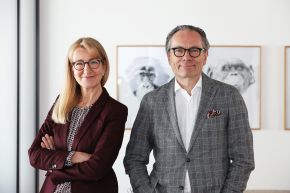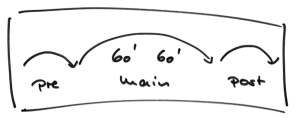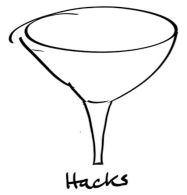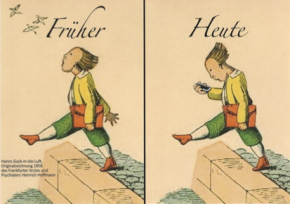|
Our latest newsletter ͏ ͏ ͏ ͏ ͏ ͏ ͏ ͏ ͏ ͏ ͏ ͏ ͏ ͏ ͏ ͏ ͏ ͏ ͏ ͏ ͏ ͏ ͏ ͏ ͏ ͏ ͏ ͏ ͏ ͏ ͏ ͏ ͏ ͏ ͏ ͏ ͏ ͏ ͏ ͏ ͏ ͏ ͏ ͏ ͏ ͏ ͏ ͏ ͏ ͏ ͏ ͏ ͏ ͏ ͏ ͏ ͏ ͏ ͏ ͏ ͏ ͏ ͏ ͏ ͏ ͏ ͏ ͏ ͏ ͏ ͏ ͏ ͏ ͏ ͏ ͏ ͏ ͏ ͏ ͏ ͏ ͏ ͏ ͏ ͏ ͏ ͏ ͏ ͏ ͏ ͏ ͏ ͏ ͏ ͏ ͏ ͏ ͏ ͏ ͏ ͏ ͏ ͏ ͏ ͏ ͏ ͏ ͏ ͏ ͏ ͏ ͏ ͏ ͏ ͏ ͏ ͏ ͏ ͏ ͏ ͏ ͏ ͏ ͏ ͏ ͏ ͏ ͏ ͏ ͏ ͏ ͏ ͏ ͏ ͏ ͏ ͏ ͏ ͏ ͏ ͏ ͏ ͏ ͏ ͏ ͏ ͏ ͏ ͏ ͏ ͏ ͏ ͏ ͏ ͏ ͏ ͏ ͏ ͏ ͏ ͏ ͏ ͏ ͏ ͏ ͏ ͏ ͏ ͏ ͏ ͏ ͏ ͏ ͏ ͏ ͏ ͏ ͏ ͏
|
This line will show up in the preview email clients
|
|
Does 360° feedback always mean a well-rounded affair?
| |

|
Please raise your hand if your company uses the good old 360° feedback tool... Aha. And now please raise your hand if the result meets your needs...? Oh. I thought so... I was torn when a really interesting client recently asked if we wanted to participate in the evaluation of their 360° feedback process pilot. On the one hand, we hear all too often that this - proven? infamous? - method involves a lot of effort. But does not always lead to sustainable, tangible results. On the other hand, we don't like to deny a customer a wish ... In short: we did it. In keeping with our passion for co-creation.
|
|
The story so far
What was it all about? Our client was not happy with the results from the use of a 360° standard tool and its subsequent external evaluation. The feedback was modest. A new, less generalized approach was sought. More orientation towards the company values, a design more oriented towards curiosity and implementation, more verbatims, less formulaic. More compass than just location.
|
|
Where should the journey go?
From the 'Feed Back' collected in the process, something was to be derived that we called 'Feed Forward'. The questionnaire did not contain the word Feed Forward, but all the questions and a comparison of BACK and FORWARD allowed this positioning. This desire for FORWARD made sense to us spontaneously; we set to work to incorporate our process know-how for better evaluation and impact.
|
|
Design: Where to start?
When analyzing the first attempt rejected by the client, it became clear where the standard tool was too superficial - and where it got bureaucratically out of hand in other areas. The solution that the client then developed provided more individual structure on the input side and more concrete intervention approaches on the results side, but remained clearly tight - quality in, quantity out. This was exemplified by an explicitly implementation-related note at the end of the evaluation: How to use it.
|
|
The evaluation design
| |

|
After some thought, we developed a tightly coordinated sequence of lean, short sessions. With enough time in between for trial and error, but timed tightly enough not to lose momentum and maintain curiosity. The setting found consists of 3 cycles, with the aim of also drawing attention to the system environment. Two cycles for the system (pre and post) and one cycle (main) with 2 sessions for the individual. Energy flows where attention goes. The page "How to use it" mentioned earlier was a wonderful priming for the participants.
The 4 steps in the procedure:
|
|
- 30 min briefing by GM: expectations, ideas and intended implementation benefits
- 60 min 360° session #1:
- Text-based approach to the person (reading the 360°)
- Conversation-based approach to the person (content, form and priorities)
- Comparison of feedback, feed forward and the desired actions
- Hacks that make the desired actions immediately realizable arise during the conversation
- Reference to a subsequent second session (underlines seriousness and interest in change)
- 60 min 360° session #2:
- Core questions: Which hacks worked, what benefits did they bring? What has changed? Sharpening the hacks and further encouragement.
- 30 min de-briefing with the GM: observation and benefits, considerations and variations - how can the results achieved be optimally utilized for the team?
|
|
Distillery
Consolidated feedback, whether 360° or stakeholder feedback, is in the first approach a funnel, fed and collected by the answers. Refined and more correct would be the image of a distillery, because the stages of the distillery and the experience of the master distiller turn the condensed drop into knowledge: a hack that can be tasted and applied. | | |
Why do we think this is a very successful co-creation?
Concentrated, clear interventions with clear benefits: We delivered what was ordered: more impact. Both the client and the service provider each rethought and implemented something obvious. With our process proposal, we expanded the quantity structure by 1/3 in order to make the system environment attentive and receptive, but this enabled a much more useful intervention. We stayed within the scope of the contract for the "sparring" parts. We turned a 2-hour evaluation session into 2 x 1-hour session. Learning takes place between the sessions. Why is this a win-win from our point of view? A very well revised and tailor-made 360° questionnaire met a service provider who was oriented towards culture, accuracy of fit and practicable impact. Just as the individual participants trusted us, the organization trusted us with curiosity.
|
|
win-win, hack-hack
What have we learned? The process needs very senior facilitators on our side, whose speaking from experience and sharing is authentic and credible. People who can share their observations courageously and directly without appearing too direct. We must consistently demand participation in the interests of maximum efficiency. A sentence like "Sorry; I didn't have time to read the report. Then tell me" led directly to the end of the session: "We'll talk when you've read it." We can only expect this from people with experience. And: all participants had to have read and taken to heart the last page and bring their own questions and observations to the evaluation. Despite everything - or perhaps because of it? - we received very positive, individual and collective feedback. We also felt the impact, relevance and beauty of the intervention in our actions.
|
|
And what specific leadership hacks can you derive from the project?
1. In 360° feedback, put what is explicitly said in quotation marks. And work courageously with the implicit content of what you read and perceive. 2. Add a request to initiate deep dialogs to your list of expectations. 3. Reward the seriousness of the participants with concrete handouts, with hacks. Just as we want to reward the valuable time you have dedicated to reading this newsletter with these three hacks. Thank you!
|
|
A new thought, poem, face ...
Today we are introducing a new coach in our team: Uli Selzer.
You can find more information about him on our website.
|
|
|
Attentiveness
The consequences may be similar, but the causes and reasons are very different.
(Card: modern times GmbH)
"History does not repeat itself, but it rhymes."
(Mark Twain)
|
|
|
This article has different fathers and mothers, the people I talked to at our customer, also Dr. Christine Kaul, Martin Scherm and common sense... Compiled by HJS
|
|
|
Spreng Executive Business Coaching GmbH,
Große Bockenheimer Str. 43,
60313 Frankfurt am Main,
Mail: hello@sprengcoaching.com,
Tel: +49 69 913988 24
© 2025 Spreng. Partners for excellence., Alle Rechte vorbehalten.
|
|
| |
|
|






